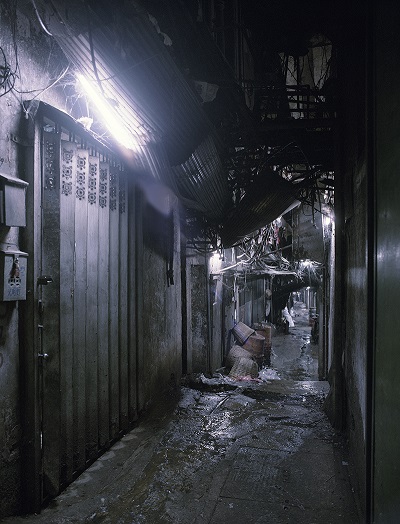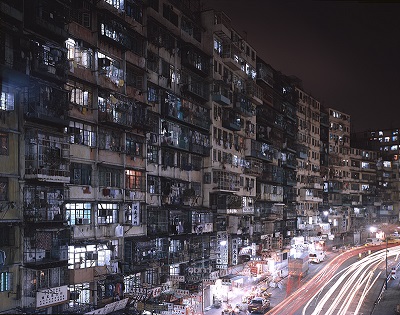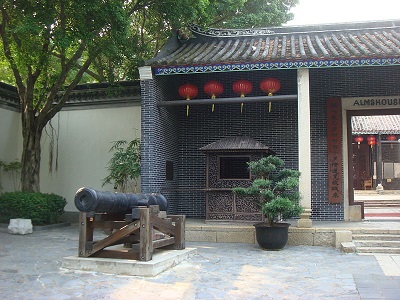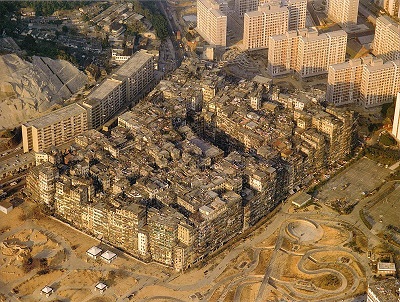In this article I will be telling you about a city that was size of a neighbourhood but the population of a small city. It was a city inside a city. It was named as the Kowloon Walled City or KWC, located in the Hong Kong Kowloon city area.
You might think why do we need to know about this particular city. Because the Kowloon walled city was the most densely populated place on earth ever and a haven for the crimes and drugs until it was demolished to build a park. The population density of this place was 1,255,000 per 1km2. Even if it was known as a city, it was an interconnected buildings that practically large as much as a city block.
Also there weren’t any proper law in this place. The Kowloon walled city was made by the people and their needs. The only law anyone would agree on was the “squatter’s right“. The city was technically ruled by two governments but neither of them had power over anything that happened inside the city.
The streets were not safe so even the people who lived there did not walk around the city and only few knew all the roads and alleys, entrances and exits of the city. That is why you need to know about the Kowloon Walled City. Because a place like that had never been anywhere else in the history. There might be places that similar to the walled city but nothing could outdone the physical, cultural and environmental states of the Kowloon walled city.
History of the Kowloon Walled City

The Kowloon walled city was build by the Chinese during the Song dynasty (960-1279). It was a military outpost that built to manage the salt trade in the area. After the first opium war a part of Hong Kong was handed over to the British by the Treaty of Nanking. This action made Chinese authorities more cautious about the area because they felt the need to observe the British influence in Hong Kong. Eventually in 1898 the rest of the Hong Kong were ceded to the British except for the walled city.
The British allowed the Chinese officials in the walled city but they were prohibited to interfere with the British ruling outside the city. By that time there were about 700 people resided within the Kowloon walled city. But soon British officials suspected that there might be something going on inside the city na d they feared of a riot against the British. So they invaded the walled city in the following year only to find that the Chinese officials have fled the city.
British authorities have claimed the jurisdiction of the city after that because by the 1912 the Qing dynasty in China had given up the walled city completely. Although the British have claimed the authority they did not do much change to the city.
After years the walled city was in a very bad shape. Many building were about to collapse. So the Hong Kong authorities announced that they would be demolishing the decaying buildings within the city. But the Chinese government did not like agreed to it. So they claimed back the jurisdiction of the city, which was easy because the British were not originally given the authority of the city.
But it was only for a few years. Soon the China-Japan war started and the Chinese soon lost the interest on the city. In 1941 during the second world war the Japanese troops occupied the Hong Kong after the British have surrendered the British crown colony of Hong Kong. During the Japanese occupation, the Japanese troops used the stones in the walled city to repair and expansion of the Kai Tak airport. In 1945 the Japanese emperor Hirohito surrendered and the WWII was officially ended. Then again the Chinese government claimed back the walled city while the Britain claimed the rest of the Hong Kong.
The Hong Kong and the walled city was filled with the citizen who fled during the Chinese civil war after the 1945. By 1947 there were about 2000 people living in the walled city limits. The Hong Kong authorities had failed to drive these refugees off the city and soon the British authorities had decided not to meddle with the affairs within the walled city. Specially after the Chinese government stated that they have no intention to renounce the jurisdiction on the walled city.
So for a long time neither Chinese government nor the British Hong Kong authorities could interfere with the affairs within the walled city. Because of these actions soon it became a safe haven for the criminals. In the beginning of the 1950s a massive fire broke in the walled city and it destroyed most of it. The fire destroyed more than 2,500 units that over 17,000 people of 3,500 families lived in.

After the fire the citizen had the chance to expand the walled city as they wished also the new comers had a chance to have a new place in the new buildings. After this incident the population of the Kowloon walled city had increased once again. During the next decade the walled city was rebuilt and some of the buildings were expanded up to 14 stories. By the early 1970s the city expanded to its maximum size. There could have been much more taller buildings but the Hong Kong authorities have restricted buildings over 14 stories because above the city there was an air path headed nearest airport.
The Daily Life of the Kowloon Walled City
After the rebuilding the city it was more popular with criminals. The city was practically ruled by the Chinese mafia. And many clinics without a licensed doctors could be seen because they were not afraid of being prosecuted. The clinics were cheaper compared to the clinics in the other areas. Because of that many people from the Hong Kong’s working class preferred to come to the clinics in the walled city. Not only the clinics any other business was easy to start because there wasn’t any rule regarding the businesses except the “squatter’s rights”. So it was easy to set up a new business place and the rent was cheaper than the rest of the Hong Kong. People who had squatter’s rights would decide the rent and any other regulation. The government police or any authority had no power within the city.

A single unit was about 25 square feet in size and a family of 4-6 people used to live in them. The balconies in these units had covered in iron grills and tv antennas and cloth lines were a common sight every block. There were small alleys between these buildings. Because of the tightly packed tall buildings these alleyways had never seen the sunlight. They were about 1-2 m wide and had no drainage system. The lower levels were always damp and humid because of the lack of sunlight.
Few waterlines from out the city limits were able to supply the water into the city. But authorities believed that there could have been water wells. There was an informal staircase system that allowed people to walk from one corner to another without ever touching the ground.

The sanitary facilities and the quality of living in the area was in a minimum condition. So for a quite some time the Hong Kong authorities wanted to demolish the buildings. The surrounding area was undergone development yet the Kowloon walled city was not. The only kind of changes it had were the growing population and increasing unsanitary living condition.
Since there were many people living in small and tightly packed spaces the community in those buildings were very close to one another. The rooftops were often used for evening gatherings. So even the place was flooded with criminals the citizens lived there were quite useful and united. Because of this when the authorities announced that they wanted to demolish the city, they could not done it in the time. Eventually the crimes of the city was decreased but neither Chinese government nor British could tolerate of having such a community. So both governments mutually decided to tear down the buildings of Kowloon walled city.
Demolition
After years of struggle the Hong Kong government had finally able to demolish the buildings. They distributed $350 million dollars among the citizens as compensation. But there were some who did not wanted to leave at all. So the authorities had to move them by force. The eviction of the people who lived there took place for five years.
The demolition process started on the 23rd March 1993 and ended on the April 1994. The construction of the park was started next month. If you ever visit Hong Kong, Kowloon city part you can see few ruins of the previous Kowloon walled city.

There are the Old Yamen (A common hall or administrative building of the old Kowloon Walled city) and one of the original canon used in the walled city which can be seen as the ruins of the old Kowloon walled city.

What do you think about the KWC? Have you ever been to the city before it was demolished ? Let me know…
Thank you for reading ❤


